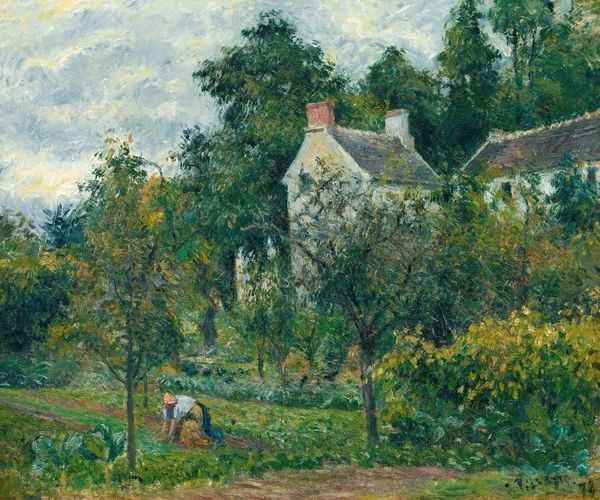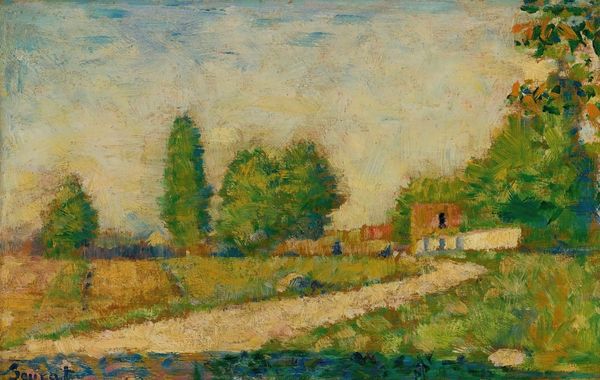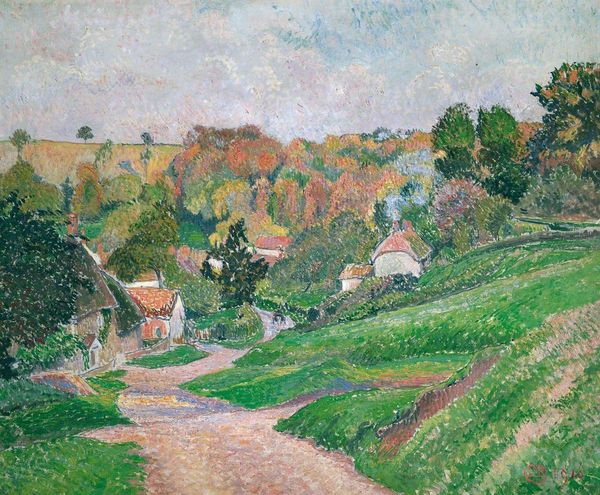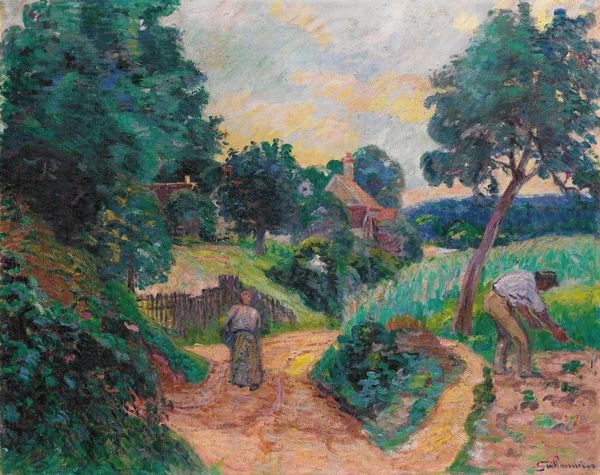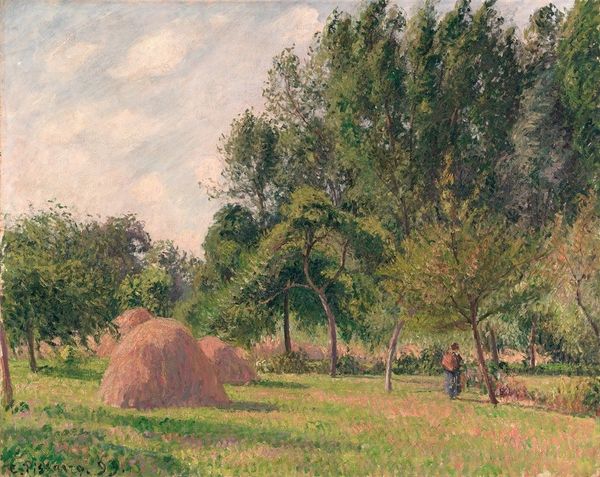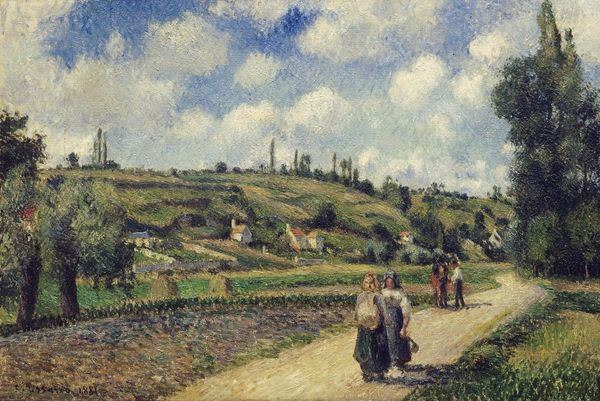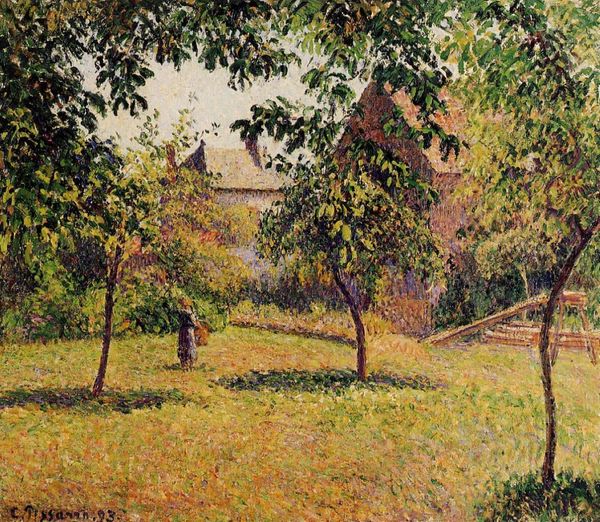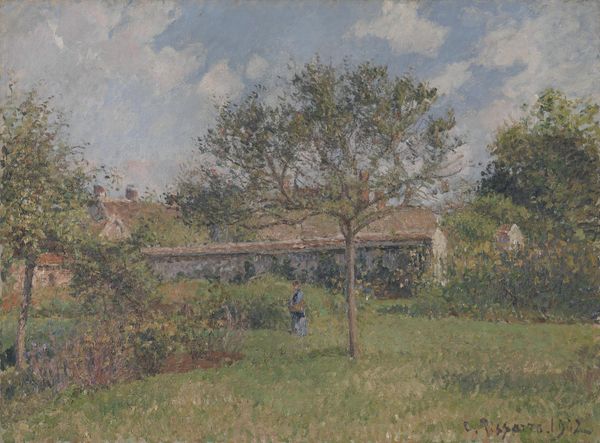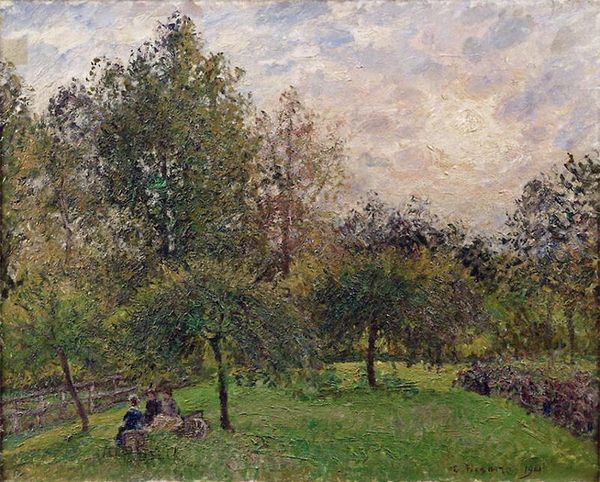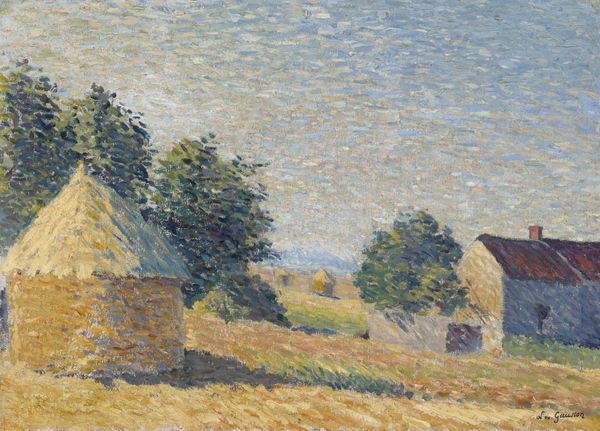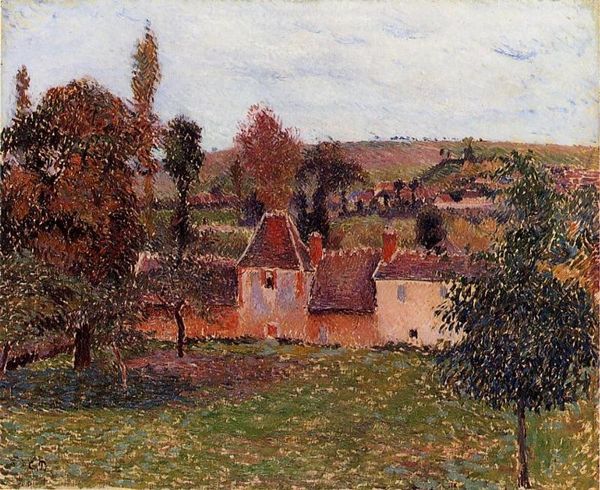
painting, plein-air, oil-paint, impasto
#
painting
#
impressionism
#
plein-air
#
oil-paint
#
landscape
#
impressionist landscape
#
nature
#
impasto
#
cityscape
#
genre-painting
#
post-impressionism
Copyright: Public Domain: Artvee
Editor: So, here we have Camille Pissarro's "La Maison Delafolie à Éragny", painted in 1885. It’s an oil painting, and the brushstrokes are so visible! I'm immediately struck by how grounded and almost ordinary it feels – like a scene captured in a fleeting moment. How do you interpret this work? Curator: It's interesting you use the word 'ordinary'. Consider that Pissarro was deeply invested in anarchist ideals. For him, portraying rural life wasn’t just aesthetic; it was a political statement. He elevated the everyday experiences of peasants, challenging the dominant narratives of bourgeois life celebrated in mainstream art. How might the deliberate lack of idealization factor into his socio-political commentary? Editor: That's a perspective I hadn't considered. The visible brushstrokes and the earthy tones now feel less accidental and more like a conscious choice to represent reality without romanticism. He’s not just showing us a landscape; he's showing us a life. Does the location, Éragny, hold any specific significance? Curator: Absolutely. Éragny became a hub for anarchist thinkers. Pissarro's home was a meeting place, and his art became intertwined with the movement’s critique of social hierarchies. Think about the figures in the painting – the scale, the facelessness – suggesting the collective experience rather than individual heroism. It's about labor, community, and a quiet resistance to industrialization. Editor: So, it's not just a peaceful countryside scene; it's a carefully constructed commentary on society. I’m struck by the fence in the foreground, and how it both invites us in and holds us back. Was Pissarro implying we are separate from the common people in the scene? Curator: Perhaps. The fence introduces an element of social and physical division that calls into question who has access and who is excluded, which leads us to think more critically about our own positionality when observing this kind of rural, agrarian imagery. Editor: I will definitely carry a broader context next time I observe this kind of artwork. Curator: Likewise.
Comments
No comments
Be the first to comment and join the conversation on the ultimate creative platform.
